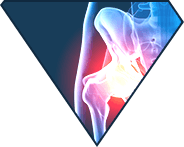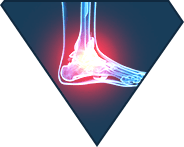Image-Guided Shoulder Hydrodistension for Frozen shoulder
Dr Sumit RamtekeOverview
Frozen shoulder, also known as adhesive capsulitis, is a condition that affects a substantial number of adults, causing pain and limited movement in the shoulder. The cause of this condition is still unclear, but it typically undergoes three stages:
- Freezing stage – the pain is dominant
- Frozen stage – both pain and movement restriction are noticeable
- Thawing stage – movement restriction is more pronounced
To manage frozen shoulder, healthcare professionals may recommend several treatments. One of the options is hydrodistension, which is an effective method conducted by musculoskeletal radiologists. This procedure can be helpful, especially in the frozen and thawing stages of the condition.
In this article, we will briefly define image-guided shoulder hydrodistension and the role it plays in the management of frozen shoulder. After that, we will take a look at varying aspects of this technique and answer a few commonly asked questions.
The signs and symptoms of frozen shoulder
Healthcare professionals determine the severity of your condition by evaluating how it’s affecting your day-to-day activities and quality of life.
The signs and symptoms of frozen shoulder develop gradually and include:
- Pain in the shoulder that may be dull or aching. Usually, the pain becomes worse at night
- Stiffness in the shoulder that makes it difficult to move or lift your arm
- Limited range of motion in the shoulder, making it hard to reach overhead, behind the back, or across the chest
- Weakness in the shoulder and arm
- A crackling or grating sensation when moving the shoulder
In some cases, the pain may radiate down the arm or into the elbow and hand.
What is Hydrodistension?
Hydrodistension is a medical procedure that revolves around injecting a solution into the joint of the shoulder under ultrasound or X-ray guidance.
This treatment aims to improve pain and shoulder movement and can show results within three weeks. However, its overall effectiveness compared to other treatments is still unclear.
The Impact of Hydrodistension on Pain and Mobility
Patients who underwent the image-guided shoulder hydrodistension reported a significant decrease in their pain levels. On average, pain scores decreased from 8.0 (before the treatment) to 2.9 (6 weeks after treatment), representing a 64% reduction in pain. The trend continued even after 12 weeks, with patients reporting an impressive 77% reduction in pain. By 24 weeks, the pain reduction reached an 84% reduction. These improvements in pain can significantly enhance the patient's quality of life.
Alongside pain reduction, shoulder mobility also improved significantly. In fact, patients reported even more recovery of movement, which is a crucial aspect for daily life activities.
Frequently Asked Questions (FAQs) About Ultrasound Guided Hydrodistension
1. What is ultrasound (or X-ray)-guided hydrodistension?
Ultrasound-guided hydrodistension is a treatment that injects a mixture of saline, local anesthetic, and steroid into the shoulder joint under high pressure. The purpose of this procedure is to stretch a tight joint capsule, aiding movement. The first time this technique was used dates back to 1965 by Andren and Lundberg.
2. When should ultrasound-guided hydrodistension be a good option for a frozen shoulder?
Hydrodistension is ideal for cases where the pain is manageable, allowing healthcare professionals to focus on regaining the range of motion. Therefore, we do not usually perform this technique during the early stages of the disease.
3. How does ultrasound-guided hydrodistension compare with a standard steroid injection?
According to systematic reviews, hydrodistension may provide superior short-term improvement compared to steroid injections. This is especially true for patients in the early stages of frozen shoulder. Some research also suggests that hydrodistension could expedite the recovery of a pain-free range of movement.
With that said, long-term efficacy is similar for both treatments.
4. Can the procedure lead to a rupture in the joint capsule?
While researchers previously thought that increased pressure within the joint capsule could cause a rupture at its tightest point, current evidence suggests that ruptures typically occur at the weakest and thinnest parts of the capsule. Interestingly, studies found that preserving the capsule might lead to better short-term outcomes in terms of the range of movement and pain reduction.
5. How can we differentiate between frozen shoulder and pseudo-frozen shoulder?
Clinical examinations usually tell apart true capsular stiffness and stiffness due to muscle spasms. More specifically, frozen shoulder tends to display steeply rising pressure curves, unlike other conditions which show consistently low flat pressure curves.
This is a technical test that will help your physician confirm the diagnosis.
6. Is ultrasound-guided hydrodistension a painful procedure?
The procedure can cause discomfort due to the pressure of injecting a volume of fluid into a contracted joint capsule. However, the use of a local anesthetic in the joint space can minimize this discomfort. The level of discomfort varies among individuals; for some, it might be extremely uncomfortable, while others may feel nothing.
7. Are there any contraindications to ultrasound-guided hydrodistension?
The procedure is not suitable in situations where the joint is hard to access due to inflamed or infected superficial tissues. Therefore, this procedure is not indicated for individuals with a systemic infection present or those with an uncontrolled bleeding disorder. Patients who take anticoagulants should also steer clear of this therapy.
Takeaway message
Frozen shoulder is a somewhat challenging condition to manage, especially during the early stages. Luckily, image-guided shoulder hydrodistension can be quite effective in reducing the pain and restoring articular range of motion.
We hope that this article managed to highlight the potential benefits and shortcomings of image-guided shoulder hydrodistension in the management of frozen shoulder.
Further reading
Mezian, K., Coffey, R., & Chang, K. V. (2021). Frozen shoulder. In StatPearls [Internet]. StatPearls Publishing.
Rymaruk, S., & Peach, C. (2017). Indications for hydrodilatation for frozen shoulder. EFORT open reviews, 2(11), 462–468. https://doi.org/10.1302/2058-5241.2.160061
Dimitri-Pinheiro, S., Klontzas, M. E., Pimenta, M., Vassalou, E. E., Soares, R., & Karantanas, A. H. (2023). Ultrasound-guided hydrodistension for adhesive capsulitis: a longitudinal study on the effect of diabetes on treatment outcomes. Skeletal radiology, 52(5), 1005–1014. https://doi.org/10.1007/s00256-022-04141-2
Barnes, R. H., Paterno, A. V., Lin, F. C., Zhang, J., Berkoff, D., & Creighton, R. A. (2022). Glenohumeral Hydrodistension for Postoperative Stiffness After Arthroscopic Primary Rotator Cuff Repair. Orthopaedic journal of sports medicine, 10(6), 23259671221104505. https://doi.org/10.1177/23259671221104505
















